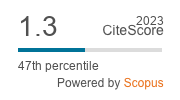Sustainable Energy Crop Production in Poland: Perspectives
DOI:
https://doi.org/10.2478/v10103-012-0017-7Abstract
In the context of achieving the targets of the energy economy, Poland’s demand for bioenergy is stimulated by several factors, including the biomass potential of agricultural cultivation. The objective of this article is to indicate perspectives for the sustainable production of energy crops in Poland through the production of total biomass as the main renewable source of energy utilized in the countries of Europe and supported by Directive 2009/28/EC of the European Parliament and of the Council of April 23, 2009 on the Promotion of the Use of Energy from Renewable Sources, currently in force. The most important reasons for promoting the production of plant biomass for energy purposes is the desire to work against climate change and reduce the emission of greenhouse gasses. This article indicates the significant role of Life Cycle Assessment (LCA) in biofuels and their production. Note is also taken of agro– climatic and soil conditions for the production of biomass in Poland as well as the economic aspects using the Agricultural Production Space Valuation Ratio (APSVR).
Downloads
References
Clair S. S., Hillier J., and Smith P. (2008), Estimating the Pre–Harvest Greenhouse Gas Cost of Energy Production, “Biomass and Bioenergy” 32 (5) pp. 442–452
Google Scholar
CSO (2011a), Environment, Dariusz Bochenek (Editor), CSO, Regional and Environmental Surveys Division, Warsaw
Google Scholar
CSO (2011b), Statistical Yearbook of Agriculture, Halina Dmochowska (Editor), Central Statistical Office, Statistical Publication Department, Warsaw
Google Scholar
Faber A. (2008), Przyrodnicze skutki uprawy roślin energetycznych studia i raporty (The effects of energy plant cultivation on nature: Studies and reports), Institute of Soil Science and Plant Cultivation, A State Research Institute (IUNG – PIB), 11, pp. 43–53
Google Scholar
Igras J. and Lipiński W. (2006), Regionalne zróżnicowanie stanu agrochemicznego gleb w Polsce Studia i ra'porty (Regional differentiation in the agro–chemical state of soils in Poland: Studies and reports), Institute of Soil Science and Plant Cultivation, A State Research Institute (IUNG – PIB), 15, pp. 71–79
Google Scholar
Jug A., Makeschin F., Rehfuess K. E., and Hoffman–Schielle C. (1990), Short Rotation Plantations of Balsam Poplars, Aspen and Willow on Former Arable Land in the Federal Republic of Germany, “III, Soil Ecological Effects, for Ecology and Management”, 121: 85–99
Google Scholar
Krasowicz S. and Kopiński J. (2009), Wpływ warunków przyrodniczych i organizacyjno– ekonomicznych na regionalne zróżnicowanie rolnictwa w Polsce (The impact of natural and organizational–economic conditions on regional diversity in agriculture in Poland), Studies and reports, Institute of Soil Science and Plant Cultivation, A State Research Institute (IUNG – PIB), 15 pp. 81–99
Google Scholar
Kukuła S. and Igras J. (2004), Nawożenie w krajach Europy Zachodniej i w Polsce – stan i prognoza (Fertilization in the countries of Western Europe and Poland: State and prognosis), “Wieś Jutra (Rural Tomorrow)”, 10, pp. 1–4
Google Scholar
Stuczyński T., Kozyra J., Łopatka A., Siebielec G., Jadczyszyn J., Koza P., Doroszewski A., Wawer R., and Nowocień E. (2007), Przyrodnicze uwarunkowania produkcji rolniczej w Polsce, (Agricultural production nature condition in Poland), Studies and reports, Institute of Soil Science and Plant Cultivation, A State Research Institute (IUNG – PIB), 7, pp. 77–115
Google Scholar
Węgorek T. (2008), Biologiczne metody zmniejszenia zagrożenia gleb erozją wodną (fitomelioracje)(Biological methods for decreasing the threat of water erosion of soil (phyto– improvement): Studies and reports, Institute of Soil Science and Plant Cultivation, A State Research Institute (IUNG – PIB), 10: 123–148
Google Scholar
Henzelmann T., Schaible S., Stoever M., and Meditz H. (2011), The Genesis and Promise of Green Business Revolution, [in:] Charles–Edward Bouée (Editor), Green Growth, Green Profit: How Green Transformation Boosts Business, Roland Berger Strategy Consultants GmbH
Google Scholar
Demirbas A. (2009), Biofuels, Springer, London
Google Scholar
Goldemberg J. (2011), Chapter 1: The Role of Biomass in the World’s Energy System, [in] Marcos Silveira Buckeridge and Gustavo H. Goldman (Editors), Routes to Cellulosic Ethanol, Springer, New York
Google Scholar
Zah R., Böni H., Gauch M., Hischier R., Lehmann M., and Wäger P. (2007) Life Cycle Assessment of Energy Products: Environmental Assessment of Biofuels, Executive Summary, EMPA – Materials Science & Technology, Federal Office for Energy (BFE), Bern, 2007, p. 161, http://www.bioenergywiki.net/images/8/80/Empa_Bioenergie_ExecSumm_engl.pdf
Google Scholar
Crutzen P. J., Mosier A. R., Smith K. A., and Winiwarten W. (2008), N2O Release from Agrobiofuel Production Negates Global Warming Reduction by Replacing Fossil Fuels, “Atmospheric Chemistry and Physics”, 8: 389–395
Google Scholar
Downloads
Published
How to Cite
Issue
Section
License

This work is licensed under a Creative Commons Attribution-NonCommercial-NoDerivatives 4.0 International License.











